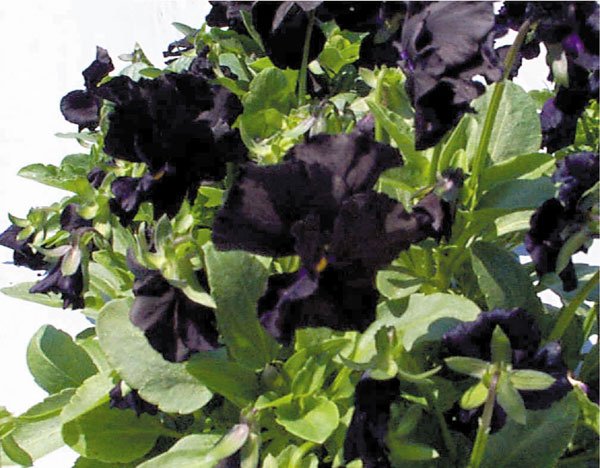If you’ve been reading this column any amount of time, you’ll
probably recall that I’m a believer regarding the wisdom of
black.
My mother always told me that black goes with everything
– at least in the world of fashion.
If you’ve been reading this column any amount of time, you’ll probably recall that I’m a believer regarding the wisdom of black.
My mother always told me that black goes with everything – at least in the world of fashion. But it’s also true with your garden. Black flowers go with anything, bringing quiet sophistication or show-stopping drama to your garden.
Of course, you may be asking yourself, “Fine, but how many black flowers are there?” Ah, but you may be surprised. There are black pansies, violas, irises, tulips and hollyhock, to name a few.
Jackson & Perkins, the rose people, just came out with the world’s first black delphinium named “Darkness Visible.” It features 2-inch clusters of black flowers on 2-foot flower spikes that bloom from spring to summer and again in the fall.
Locally, Goldsmith Seeds, a bedding plant hybridizer in Gilroy, has released several black annuals in recent years, including a black pansy called “Accord Black Beauty.” You should be able to find it at any retail garden center right now. It is a true black – not dark purple – with tiny yellow centers.
Be aware that if you do plant black flowers, they’re going to draw attention. Visitors to my garden always notice the black pansies first thing.
Consider growing “Accord Black Beauty” pansies with yellow violas or dwarf yellow snapdragons. Or grow the ankle-high plants in bright sunlight against an apple-green backdrop.
The light-colored background will enhance the black flowers, lifting them even more into the spotlight. Variegated or white-veined foliage plants will also add sparkle.
Joan Bolton, in Women’s Day Gardening & Outdoor Living magazine, recommends: “More daring combinations of brightly colored flowers will heighten the contrast. Use one or two solid colors in intense hues, such as red tulips or yellow coreopsis. Orange and chartreuse flowers may work as well. If your black flowers bear colored centers, plant neighbors that match. Avoid pastels, which are likely to appear washed out.”
I’d like to add black and white gardens, too. If you’ve ever been to a black and white wedding, you already know how dramatic this color combination can be. Black and white pansies or black and white violas are easily attainable this time of year. Black pansies and black violas will also combine with white snapdragons or, during the summer, white petunias or white impatiens.
Besides “Accord Black Beauty” pansy from Goldsmith Seeds and “Darkness Visible” delphinium from Jackson & Perkins, consider these other varieties:
• Scalloped, white edges add drama to the dark, velvety blooms of “Pennie Black” nemophila. This low-growing annual can be planted beneath spring bulbs where the showy flowers will serve two purposes – to capture attention and to cover withering bulb foliage.
• “Bowle’s Black” viola grows only a few inches high and six to eight inches across. Plant a mass for the best effect.
• “Molly Sanderson” viola grows about twice as tall and wide as “Bowle’s Black.” It forms a dramatic border in spring through mid summer.
• “Dark Star” tulip is an old-time variety that was actually hybridized more than 100 years ago!
• “Black Beauty” hollyhock offers a new twist on an old-fashioned flower. It features intense, dark, shimmering flowers, with a white eye.
• Columbine (Aquilegia viridiflora) offers dangling, sweet-scented chocolate-black bonnet blooms with outer greenish-yellow petals.













